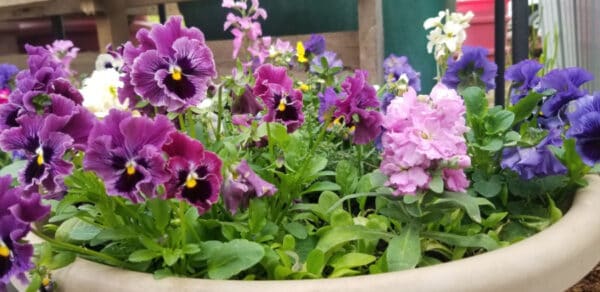Lawn
• Spot treat broadleaf weeds (dandelions, henbit, and chickweed) in your lawn if necessary. Treat on a day that is 50 degrees or warmer. Rain or irrigation within 24 hours of application will reduce effectiveness.
• Time to apply a pre-emergent to form a barrier for sprouting crabgrass. Apply crabgrass preventer in late March through mid-April for best results.
• Seed thin areas in bluegrass and tall fescue lawns.
• If no fall application of fertilizer was made, fertilize bluegrass and tall fescue.
• Mow grass ½ inch lower to remove winter debris. Do not scalp.
Vegetables and Fruits
• Prepare soil for spring planting.
• It is best to perform a soil test before fertilizing to determine needs. If there are no soil test results, fertilize the garden with 1 to 2 pounds of 10-10-10 per 100 square feet.
• Plant potatoes, peas, onions, spinach, turnips, horseradish roots , asparagus, rhubarb, strawberries, lettuce and other salad crops.
• Plant broccoli, cauliflower, and cabbage in late March.
• Start seeds inside for tomatoes, peppers, and other warm season vegetables.
• Apply dormant oil to fruit plantings to reduce scale and mite insects.
• Apply lime sulphur on fruit trees to prevent problems with fungus.
• Make a fungicide application to control peach leaf curl.
• Finish pruning fruit trees, grapes, raspberries, and blackberries.
• Remove mulch from strawberries when growth begins.
Flowers
• Plant pansies, snapdragons, calendulas, and other cool loving annuals.
• Clean up the perennial bed by cutting back foliage and removing winter mulch layer. Divide and plant perennials in the garden.
• If dry, prepare soil for planting by adding compost or other organic matter.
• As growth begins, fertilize gardens with a balanced fertilizer.
• Start annual flower seeds indoors. Ageratum, dusty miller, moss rose, etc.
• Start seeds indoors under lights for transplanting to the garden.
• Plant new roses. Remove winter mulch from existing roses and prune.
• Cut ornamental grasses back to within 3 to 5 inches of the ground.
• Fertilize spring flowering bulbs such as tulips and daffodils.
• Cut seed pods from spent bulbs.
• Help control iris borers by destroying old foliage before new growth begins.
• Unwrap mail order plants immediately and keep them cool and moist until planting.

Trees and Shrubs
• Mulch tree and shrub plantings up to 4 inches deep, keeping mulch away from trunks.
• Fertilize trees and shrubs.
• Plant new trees in the landscape.
• Remove tree wraps from young trees for summer growth.
• Rake and clean groundcover planting.
Pruning
• Prune summer-flowering shrubs such as pink spirea, potentilla, hydrangea…
• Prune trees, except birch, maple, and walnut, which are best pruned after leafing out.
• Wait to prune spring flowering shrubs until after they bloom.
Miscellaneous
• House plants help cure cabin fever!
• Sterilze pruners with a 10% bleach solution. Rinse, dry & oil to prevent rust.
• Sharpen and repair garden tools.
• Clean out birdhouses, but don’t paint them!
This information is brought to you from Nadine Champlin, Designer, Grimms Gardens; and Johnson County K-State Research and Extension. http://www.johnson.ksu.edu/p.aspx?tabid=138


